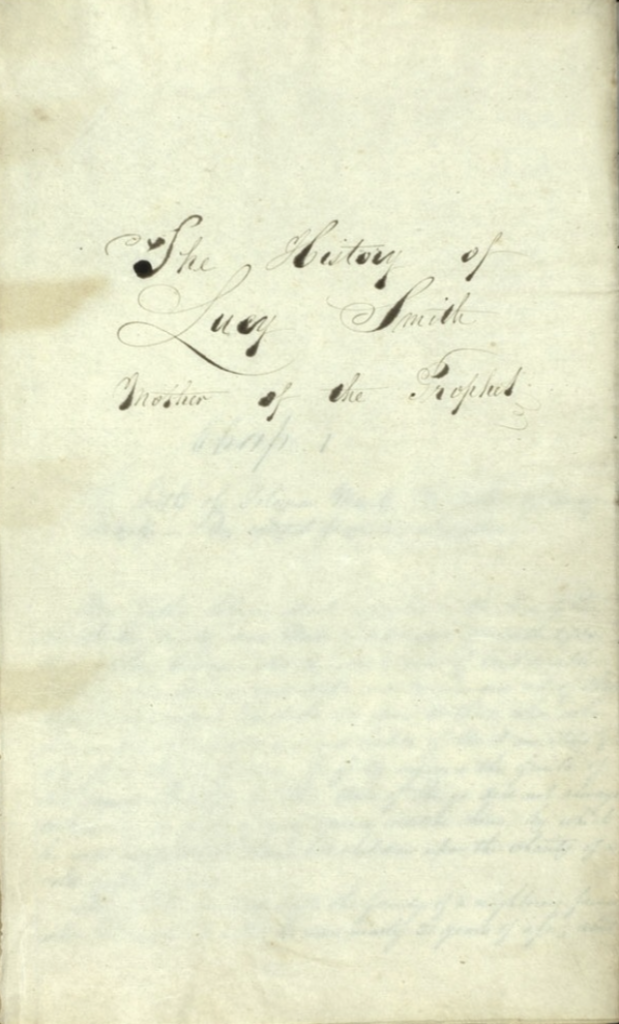The links to the Joseph Smith papers were reported by Jonathan Neville in his book Between These Hills – A Case for the New York Cumorah published in May 2021.
Record 1

This first link is as follows:
https://www.josephsmithpapers.org/paper-summary/lucy-mack-smith-history-1844-1845/41
These screenshots are of the history given by Lucy Mack Smith telling the story of her son Joseph Smith. Below are the handwritten images of this history – I presume the handwriting to be that of Martha Howard Coray.


A record is on a side hill on the hill of Cumorah 3 miles from this place remove the grass and the moss and you will find a large flat stone…
Lucy Mack Smith telling the words of the Angel Moroni of when he visited her son Joseph Smith.
Record 2
The second link is as follows:
https://www.josephsmithpapers.org/paper-summary/lucy-mack-smith-history-1845/111
Below is another screen shot from the Joseph Smith Papers. This tells about the angel reprimanding Joseph Smith for not doing enough to prepare for receiving the Gold Plates which contain the Book of Mormon.

“Stop father Stop.” said Joseph, “It was the angel of the Lord — as I passed by the hill of Cumorah, where the plates are, the angel met me and said, that I had not been engaged enough in the work of the Lord;
Record 3
The third link is as follows:
https://www.josephsmithpapers.org/paper-summary/history-1834-1836/90
This is the Jonathan Neville made infamous Letter VII written by Oliver Cowdery.

I must now give you some description of the place where and the manner in which these records were deposited.
You are acquainted with the mail road from Palmyra, Wayne Co. to Canandaigua, Ontario Co. N.Y. and also, as you pass from the former to the latter place, before arriving at the little village of Manchester, say from three to four, or about four miles from Palmyra, you pass a large hill on the east side of the road. Why I say large, is because it is a large perhaps, as any in that country. To a person acquainted with this road, a description would be unnecessary, as it is the largest and rises the highest of any on that road. The north end rises quite sudden until it assumes a level with the more southerly extremity and I think I may say an elevation higher than at the south a short distance, say half or three fourths of a mile. As you pass toward Canandiagua it lessens gradually until the surface assumes….

…its common level, or is broken by other smaller hills or ridges, water courses and ravines. I think I am justified in saying that this is the highest hill for some distance round, and I am certain that its appearance, as it rises so suddenly from a plain on the north, must attract the notice of the traveller as he passes by.
At about one mile west rises another ridge of less height, running parallel with the former, leaving a beautiful vale between. The soil is of the first quality for the country, and under a state of cultivation, which gives a prospect at once imposing, when one reflects on the fact, that here, between these hills, the entire power and national strength of both the Jaredites and Nephites were destroyed.

By turning to the 529th and 530th pages of the book of Mormon, you will read Mormon’s account of the last great struggle of his people, as they were encamped round this hill Cumorah. (it is printed Camorah, which is an error.) In this valley fell the remaining strength and pride of a once powerful people, the Nephites—once so highly favored of the Lord, but at that time in darkness, doomed to suffer extermination by the hand of their barbarous and uncivilized brethren. From the top of this hill, Mormon, with a few others, after the battle, gazed with horror upon the mangled remains of those who, the day before, were filled with anxiety, hope or doubt. A few had fled to the South, who were hunted down by the victorious party, and all who would not deny the Saviour and his religion, were put to death. Mormon himself, according to the record of his son Moroni, was also slain.
Conclusion
It is evident from these three historical records found in church history, that the Hill Cumorah found near Palmyra is indeed the Hill Cumorah as written about in the Book of Mormon. Later we will look at other evidences backing up this claim.